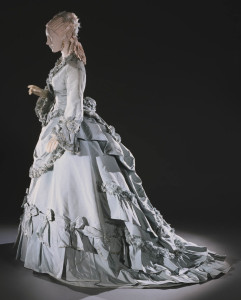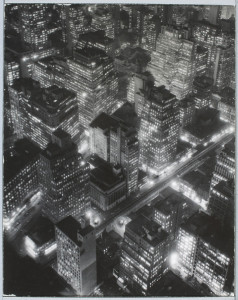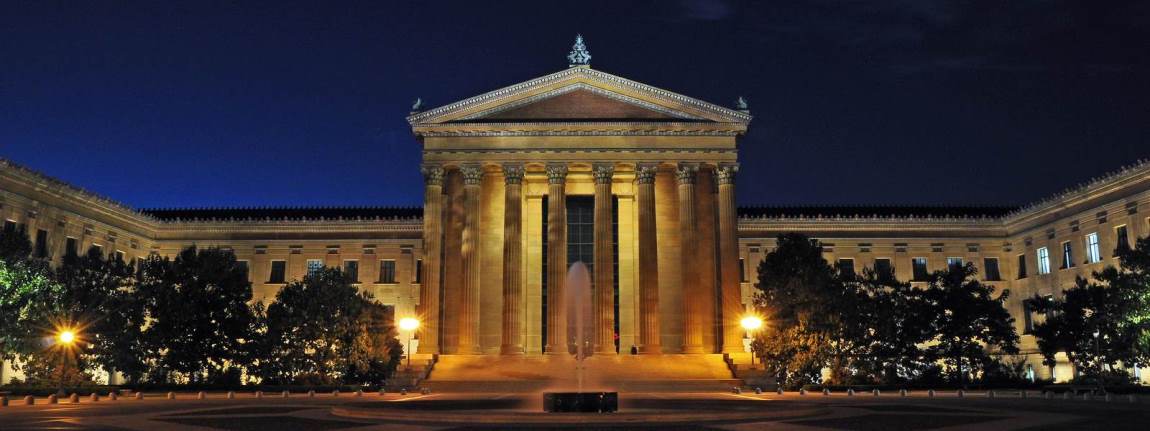Editor’s Note: Each year PHMC hosts students from Pennsylvania state colleges and universities through The Harrisburg Internship Semester (T.H.I.S.) program. The interns come from a wide variety of backgrounds and majors and are encouraged to gain writing experience by authoring a blog post on a topic that interests them.
by Kara Adams, T.H.I.S. intern
A lot can be said about where I grew up and where I went to college, but their one feature in common is their rural natures. While rural communities are excellent places to grow up and live, it’s hard to ignore the disconnectedness they experience from cultural centers, such as museums in big cities. Many museums, however, are taking a new approach to providing access to their collections, with a rise in the usage of social media and the creation of collections databases hosted on the museums’ websites. One Pennsylvania museum taking full advantage of the interconnectivity the internet provides is the Philadelphia Museum of Art, whose online collections database and social media pages give a museum experience to anyone with an interest in history and an internet connection.

Woman’s Day Dress: Bodice and Skirt, artist unknown c. 1825. Courtesy of the Philadelphia Museum of Art, Online Collections Database.
The Philadelphia Museum of Art maintains an online collections database which contains more than 77,000 records – over a third of its total collections. They can be searched by keyword, category, artist/maker name, country of origin, curatorial department, or accession number, and options to only show works with provenance records or associated audio files are also provided. The search options are quite extensive, with 40 classification categories and ten curatorial departments. Each piece has its own page, with the image of the work displayed and the work’s title, creator, date of creation, medium, dimensions, curatorial department, location within the museum, accession number, and credit line provided to the side of the image. Select works also have labels providing further historical or artistic context. The enormity of the collections has to be seen to be believed. I know I’ve spent hours browsing the costumes and textiles category alone!

New York At Night, by Berenice Abbot c. 1932, found in the “nhd 1929 to 1945 urban” tag. Courtesy of the Philadelphia Museum of Art, Online Collections Database.
Of particular interest is the Museum’s folksonomy, or social tagging system, which allows users to label items in the online collections with tags of their own. Someone unfamiliar with folksonomies may expect the tags to be mostly useless drivel and pointless commentary by users; however, at least in this folksonomy, that is emphatically not the case. The most widely used tags (gauged by the size of the label within the tag cloud) are organization tags, such as “impressionist,” “nhd 1900 to 1929 photo culture,” and “gelatin silver print.” The “nhd [time frame] [media type]” format is surprisingly popular; within the tag cloud presented on the site, there are over 200 such tags which range from 1763 to the present and contain media types such as photography, portraits, tools, landscapes, architecture, and many more, as well as further qualifiers such as “war,” “culture,” “urban,” and “leisure.”
The Philadelphia Museum of Art’s folksonomy seems to have achieved what academic literature on social tagging sees as some of the most desirable elements of the social tagging system: it retains the flexibility of user-generated descriptors without using a pre-determined set of definitions, but has reached a level of stability, in that the level of synonym use and tag duplication is relatively low and users appear to have reached a consensus as to what organizational tags to use and when to use them. In addition, this kind of tagging system allows for significantly increased engagement by museum and website patrons. Allowing the use of user-generated tags increases user investment in the things being tagged and, by extension, in the cultural history those things represent.
The Museum’s use of outside forms of social media is equally impressive; in addition to podcasts and RSS feeds, the Museum runs a Twitter, a Facebook, an Instagram, and a Tumblr. As of today, the @philamuseum Twitter account has over 77,500 followers and tweets more than once a day with information about programs and exhibits at the Museum. The Museum’s FaceBook page is similarly well-visited, with daily posts, over 1,000 photos, and over 251,000 page views and 81,000 likes.
Perhaps most useful to those interested in its collections, however, are the Museum’s Instagram and Tumblr accounts, which focus more on images where Twitter and FaceBook rely on text. The Museum’s Tumblr account is particularly lively, with at least two posts per day, composed of one or more images and an information-packed blurb in each post. There are also three weekly “events” on the Museum’s Tumblr: More Art Monday, which exhibits selected works that conform to a given theme (the most recent as of this writing are “flowers,” “April showers,” and “Easter”); Throwback Thursday, which displays photos from significant events in art history or previous museum exhibitions; and Fashion Friday, which showcases pieces from the Museum’s costumes collection.
So the next time you’ve got a few free minutes (or hours!), consider spending it browsing the Philadelphia Museum of Art’s online collections and maybe adding some tags of your own to the folksonomy, or check out their Twitter, Tumblr, or FaceBook. It’ll definitely be time well spent!
Kara Adams is a New Jersey resident and Clarion University senior, graduating in the summer of 2014 with a B.A. in History and a B.S. in Molecular Biology. She hopes to attend graduate school for Museum Studies, and was a 2014 T.H.I.S. intern with the CRGIS Section of the Bureau for Historic Preservation.
Comment Policy
PHMC welcomes and encourages topic-related comments on this blog. PHMC reserves the right to remove comments that in PHMC’s discretion do not follow participation guidelines.
Commenters and Comments shall be related to the blog post topic and respectful of others who use this site.
Commenters and Comments shall not: use language that is offensive, inflammatory or provocative (this includes, but is not limited to, using profanity, obscene, or vulgar comments); disparage other commenters or people; condone illegal activity; identify the location of known or suspected archeological sites; post personal information in comments such as addresses, phone numbers, e-mail addresses or other contact details, which may relate to you or other individuals; impersonate or falsely claim to represent a person or an organization; make any commercial endorsement or promotion of any product, service or publication.
If you would like to comment on other topics not related to this blog post but related to PHMC, please fill out the PHMC Contact Us Form.

Leave a Reply